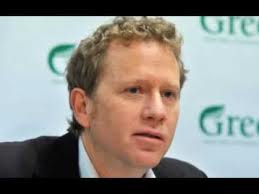 Jim Salinger delivered a timely warning in Christchurch this week when he pointed out that the city in its rebuild would be wise to work to at least a one metre estimate for sea level rise rather than the current estimate of 50 cm.
Jim Salinger delivered a timely warning in Christchurch this week when he pointed out that the city in its rebuild would be wise to work to at least a one metre estimate for sea level rise rather than the current estimate of 50 cm.
There’s a report on the Stuff website, and in the Waikato Times print edition there was a little more that evidently didn’t make it to the website.
The 50-centimetre estimate on which the council currently works is based on outdated science, Salinger said. Estimates of how much ice is melting in Greenland and Antarctica are more definite and the reviews are saying that we’re looking at a 50 to 160 cm sea rise. Some local bodies in Australia are now using a one metre estimate.
He illustrated with reference to areas like Brooklands “where you have the Waimakariri [River] coming out to the sea. You can have floods coming down the river at the same time as a storm surge, and they’re really at a lot of risk from inundation and flooding.”
In the Waikato Times piece he also referred to push-back from the insurance industry. “They may say, ‘If you build there we won’t insure you because the risk is too high’.” The paper reported that Salinger had met with council staff the previous day to press the case for a one metre estimate, with a response from the council that it was “considering its options” and “would take Dr Salinger’s comments into account”.
Let’s hope they take them very seriously into account and incorporate them into their plans. It would be a supreme irony if the Christchurch rebuild paid attention to seismic safety but overlooked vulnerability to sea level rise. The infrastructure implications for New Zealand carried by a rising sea level are very great and very costly and will extend long into the future if global temperatures are permitted to rise to the height currently in prospect. If the Christchurch rebuild offers opportunity to pre-empt any of those future threats and costs, that’s an opportunity to be grasped.

 My reading this morning didn’t incline me to optimism. I don’t actually need reminding, but in case I did two items underlined that we remain very much on course for a 3 to 4 degree global temperature rise by the end of the century. A
My reading this morning didn’t incline me to optimism. I don’t actually need reminding, but in case I did two items underlined that we remain very much on course for a 3 to 4 degree global temperature rise by the end of the century. A  The immediate
The immediate 